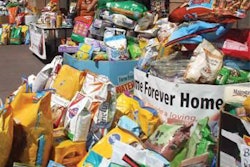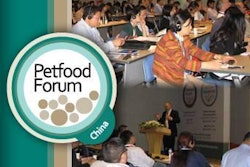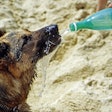US consumers are increasingly concerned about food safety -- and, by extension, petfood safety, since so many pet owners treats their pets like family members. As many as 17% of consumers have stopped buying a specific human food or brand because of a certain safety concern, according to IFIC (as reported in Food Technology magazine by A. Elizabeth Sloan, contributing editor). In addition, most US adults have at least thought about food safety in the past year, Sloan reported.
Similarly, 86% of respondents to a recent PetMD.com survey said strict quality-control measures for the petfoods they buy is important to them, and another 82% said they don't believe petfood manufacturers are "currently doing all they can to keep petfood free of Salmonella and other contaminants." According to Lorie Huston, DVM, writing on PetMD.com, that second data point indicates that petfood recalls are "taking a toll on consumer confidence."
She's probably right. Under the Food Safety Modernization Act, the US Food and Drug Administration (FDA) has established a zero-tolerance policy for Salmonella in any type of food facility (including petfood plants), so if even the most minute amount of the pathogen is detected in the facility, the manufacturer usually feels compelled to recall any foods/petfoods produced during that time in an abundance of caution, even if no products are contaminated. That has led to a seemingly endless stream of petfood recalls, including a new one by Natura Pet Products this week. It's no wonder many consumers have the impression that petfood is less safe.
The irony, of course, is that the new policies and vigilance on the part of manufacturers is making petfood more, not less, safe. (In fact, in March, FDA issued an assignment to its field offices to start sampling petfood products for Salmonella.)Yet this is difficult to explain to consumers, many of whom started paying attention to how their pets' food was made and what was in it only after the massive 2007 petfood recalls and who still do not have enough factual information to understand all the measures petfoods manufacturers take to ensure the safety of their products, including how and why those safety practices and procedures are put in place.
That lack of accurate information leads to data like this, also from the PetMd.com survey:
- Only 15% of respondents said they know if the manufacturer of their pets' food is practicing quality-control measures, such as strict physical separation of raw ingredients from cooked products in the manufacturing process, even though most respondents also said they would be more likely to buy a food if they knew the manufacturer followed that practice.
- Huston asserts that it is not common for petfood manufacturers to hold finished product in the plant, before shipping it to distributors or retailers, until test results prove the product is contaminant free. Is she correct? She cites no studies or data to back that claim. Regardless, the PetMD.com survey apparently worded the question to imply that it's a "common industry practice" to ship products before test results are final -- and of course, 98% of respondents to the survey are against that practice.
- 84% of respondents want their petfoods "Made in the USA," and 98% want to see petfood ingredients coming only from the US or countries with comparable regulatory systems.
- 80% of respondents "signaled their disapproval for a common industry practice of co-manufacturing," Huston said; the respondents said it is important that a petfood company manufactures its own products using its own employees.
All of these points are understandable, if unrealistic or possibly inaccurate. The bias against co-manufacturing no doubt extends from the 2007 recalls, because many of the recalled brands and products were manufactured by Menu Foods, one of the largest private label manufacturers at the time (its assets since acquired by Simmons Pet Food).
Yet, another irony is that many of the smaller, independent brands of petfoods and treats that tout all-natural ingredients sourced locally (or at least from the US) -- which tend to win favor among consumers seeking healthier, safer products for their pets and in listings like Whole Dog Journal's dog food reviews -- are co-manufactured by necessity, because the companies marketing those products are simply too small to have the capital to afford their own manufacturing facilities, let alone the strict safety practices that must be part of the manufacturing process.
Frankly, a large part of the blame for consumers' lack of accurate information and understanding about just how safe today's petfoods are falls on our industry. Many of the same manufacturers who follow the strictest safety practices fail to communicate the steps they take; in their zeal to stay ahead of the competition, they keep all their practices and information tightly under wraps. (That's also why many consumers believe the industry is so "secretive" and think manufacturers don't talk about how they make their products because they have something to hide.)
That communication should include when products are co-manufactured and why, along with the safety steps and systems that the brand owner insists, by contract, that the co-manufacturer follow.
Google+

















